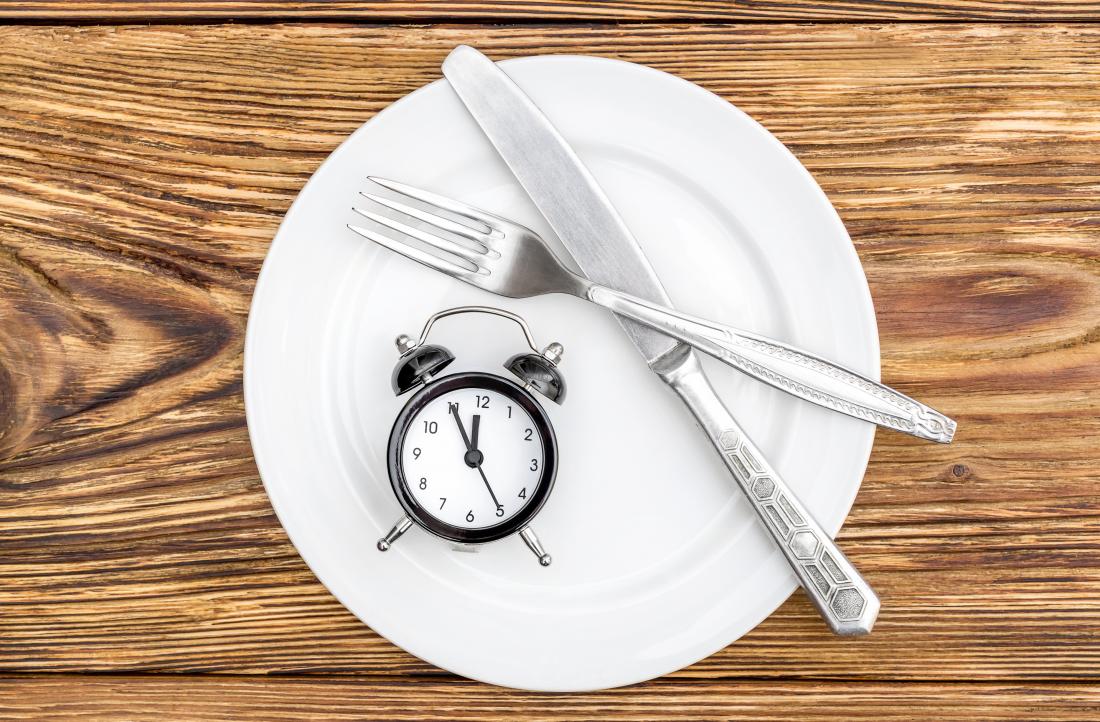Seven ways to do intermittent fasting
There are many different ways of intermittent fasting. The methods vary in the number of fast days and the calorie allowances.
Intermittent fasting involves entirely or partially abstaining from eating for a set amount of time, before eating regularly again.
Some studies suggest that this way of eating may offer benefits such as fat loss, better health, and increased longevity. Proponents claim that an intermittent fasting program is easier to maintain than traditional, calorie-controlled diets.
Each person’s experience of intermittent fasting is individual, and different styles will suit different people.
In this article, we discuss the research behind the most popular types of intermittent fasting and provide tips on how to maintain this type of diet.
Seven ways to do intermittent fasting
There are various methods of intermittent fasting, and people will prefer different styles. Read on to find out about seven different ways to do intermittent fasting.
1. Fast for 12 hours a day

Different styles of intermittent fasting may suit different people.
The rules for this diet are simple. A person needs to decide on and adhere to a 12-hour fasting window every day.
According to some researchers, fasting for 10–16 hours can cause the body to turn its fat stores into energy, which releases ketones into the bloodstream. This should encourage weight loss.
This type of intermittent fasting plan may be a good option for beginners. This is because the fasting window is relatively small, much of the fasting occurs during sleep, and the person can consume the same number of calories each day.
The easiest way to do the 12-hour fast is to include the period of sleep in the fasting window.
For example, a person could choose to fast between 7 p.m. and 7 a.m. They would need to finish their dinner before 7 p.m. and wait until 7 a.m. to eat breakfast but would be asleep for much of the time in between.
2. Fasting for 16 hours
Fasting for 16 hours a day, leaving an eating window of 8 hours, is called the 16:8 method or the Leangains diet.
During the 16:8 diet, men fast for 16 hours each day, and women fast for 14 hours. This type of intermittent fast may be helpful for someone who has already tried the 12-hour fast but did not see any benefits.
On this fast, people usually finish their evening meal by 8 p.m. and then skip breakfast the next day, not eating again until noon.
A study on mice found that limiting the feeding window to 8 hours protected them from obesity, inflammation, diabetes, and liver disease, even when they ate the same total number of calories as mice that ate whenever they wished.
3. Fasting for 2 days a week
People following the 5:2 diet eat standard amounts of healthful food for 5 days and reduce calorie intake on the other 2 days.
During the 2 fasting days, men generally consume 600 calories and women 500 calories.
Typically, people separate their fasting days in the week. For example, they may fast on a Monday and Thursday and eat normally on the other days. There should be at least 1 non-fasting day between fasting days.
There is limited research on the 5:2 diet, which is also known as the Fast diet. A study involving 107 overweight or obese women found that restricting calories twice weekly and continuous calorie restriction both led to similar weight loss.
The study also found that this diet reduced insulin levels and improved insulin sensitivity among participants.
A small-scale study looked at the effects of this fasting style in 23 overweight women. Over the course of one menstrual cycle, the women lost 4.8 percent of their body weight and 8.0 percent of their total body fat. However, these measurements returned to normal for most of the women after 5 days of normal eating. The ultimate beginner’s guide to intermittent fastingIf you are thinking about trying intermittent fasting, take a look at our guide to learn more about the health benefits, risks, and other points to consider.Read now
4. Alternate day fasting
There are several variations of the alternate day fasting plan, which involves fasting every other day.
For some people, alternate day fasting means a complete avoidance of solid foods on fasting days, while other people allow up to 500 calories. On feeding days, people often choose to eat as much as they want.
One study reports that alternate day fasting is effective for weight loss and heart health in both healthy and overweight adults. The researchers found that the 32 participants lost an average of 5.2 kilograms (kg), or just over 11 pounds (lb), over a 12-week period.
Alternate day fasting is quite an extreme form of intermittent fasting, and it may not be suitable for beginners or those with certain medical conditions. It may also be difficult to maintain this type of fasting in the long term.
5. A weekly 24-hour fast

On a 24-hour diet, a person can have teas and calorie-free drinks.
Fasting completely for 1 or 2 days a week, known as the Eat-Stop-Eat diet, involves eating no food for 24 hours at a time. Many people fast from breakfast to breakfast or lunch to lunch.
People on this diet plan can have water, tea, and other calorie-free drinks during the fasting period.
People should return to normal eating patterns on the non-fasting days. Eating in this manner reduces a person’s total calorie intake but does not limit the specific foods that the individual consumes.
A 24-hour fast can be challenging, and it may cause fatigue, headaches, or irritability. Many people find that these effects become less extreme over time as the body adjusts to this new pattern of eating.
People may benefit from trying a 12-hour or 16-hour fast before transitioning to the 24-hour fast.
6. Meal skipping
This flexible approach to intermittent fasting may be good for beginners. It involves occasionally skipping meals.
People can decide which meals to skip according to their level of hunger or time restraints. However, it is important to eat healthful foods at each meal.
Meal skipping is likely to be most successful when individuals monitor and respond to their body’s hunger signals. Essentially, people using this style of intermittent fasting will eat when they are hungry and skip meals when they are not.
This may feel more natural for some people than the other fasting methods.
7. The Warrior Diet
The Warrior Diet is a relatively extreme form of intermittent fasting.
The Warrior Diet involves eating very little, usually just a few servings of raw fruit and vegetables, during a 20-hour fasting window, then eating one large meal at night. The eating window is usually only around 4 hours.
This form of fasting may be best for people who have tried other forms of intermittent fasting already.
Supporters of the Warrior Diet claim that humans are natural nocturnal eaters and that eating at night allows the body to gain nutrients in line with its circadian rhythms.
During the 4-hour eating phase, people should make sure that they consume plenty of vegetables, proteins, and healthful fats. They should also include some carbohydrates.
Although it is possible to eat some foods during the fasting period, it can be challenging to stick to the strict guidelines on when and what to eat in the long term. Also, some people struggle with eating such a large meal so close to bedtime.
There is also a risk that people on this diet will not eat enough nutrients, such as fiber. This can increase the risk of cancer and have an adverse effect on digestive and immune health.
Tips for maintaining intermittent fasting

Yoga and light exercise may help to make intermittent fasting easier.
It can be challenging to stick to an intermittent fasting program.
The following tips may help people stay on track and maximize the benefits of intermittent fasting:
- Staying hydrated. Drink lots of water and calorie-free drinks, such as herbal teas, throughout the day.
- Avoiding obsessing over food. Plan plenty of distractions on fasting days to avoid thinking about food, such as catching up on paperwork or going to see a movie.
- Resting and relaxing. Avoid strenuous activities on fasting days, although light exercise such as yoga may be beneficial.
- Making every calorie count. If the chosen plan allows some calories during fasting periods, select nutrient-dense foods that are rich in protein, fiber, and healthful fats. Examples include beans, lentils, eggs, fish, nuts, and avocado.
- Eating high-volume foods. Select filling yet low-calorie foods, which include popcorn, raw vegetables, and fruits with high water content, such as grapes and melon.
- Increasing the taste without the calories. Season meals generously with garlic, herbs, spices, or vinegar. These foods are extremely low in calories yet are full of flavor, which may help to reduce feelings of hunger.
- Choosing nutrient-dense foods after the fasting period. Eating foods that are high in fiber, vitamins, minerals, and other nutrients helps to keep blood sugar levels steady and prevent nutrient deficiencies. A balanced diet will also contribute to weight loss and overall health.
Outlook
There are many different ways to do intermittent fasting, and there is no single plan that will work for everyone. Individuals will experience the best results if they try out the various styles to see what suits their lifestyle and preferences.
Regardless of the type of intermittent fasting, fasting for extended periods when the body is unprepared can be problematic.
These forms of dieting may not be suitable for everyone. If a person is prone to disordered eating, these approaches may exacerbate their unhealthy relationship with food.
People with health conditions, including diabetes, should speak to a doctor before attempting any form of fasting.
For the best results, it is essential to eat a healthful and balanced diet on non-fasting days. If necessary, a person can seek professional help to personalize an intermittent fasting plan and avoid pitfalls.
For more information, see MNT‘s ultimate beginner’s guide to intermittent fasting.
Q:
Are all types of intermittent fasting styles safe?
A:
People have practiced fasting for thousands of years, but its safety depends more on who is doing the fasting than the style of fasting itself. People who have malabsorption, are at risk of low blood sugar, or have other medical conditions should seek the counsel of their healthcare provider. While most people can practice many fasting styles safely, extreme types of intermittent fasting, such as the Warrior Diet, can lead to inadequate intake of nutrients such as fiber, vitamins, and minerals. Therefore, people should approach this style of fasting with caution. Natalie Butler, RD, LD

 no
no no
no